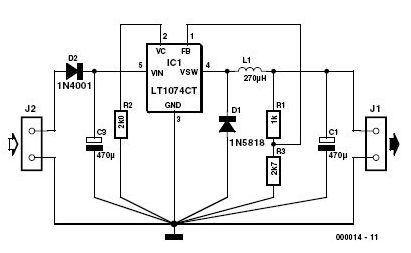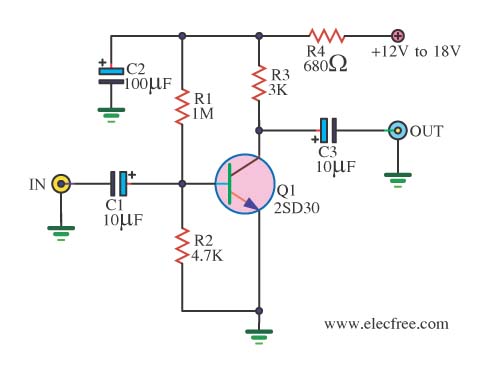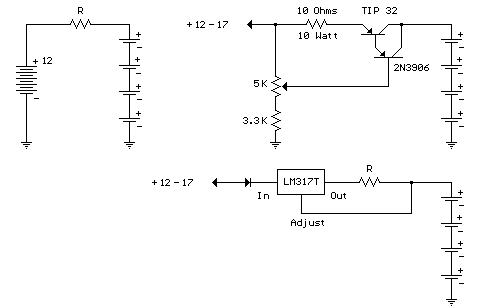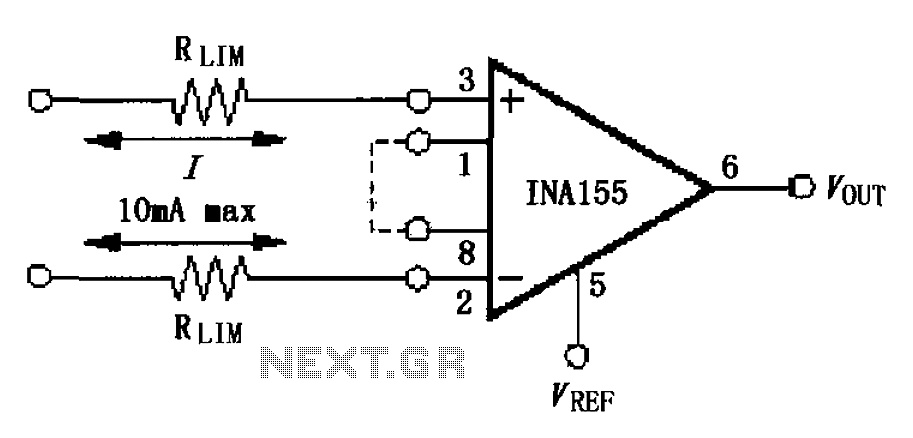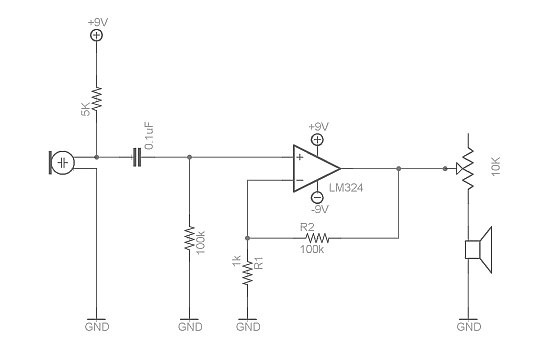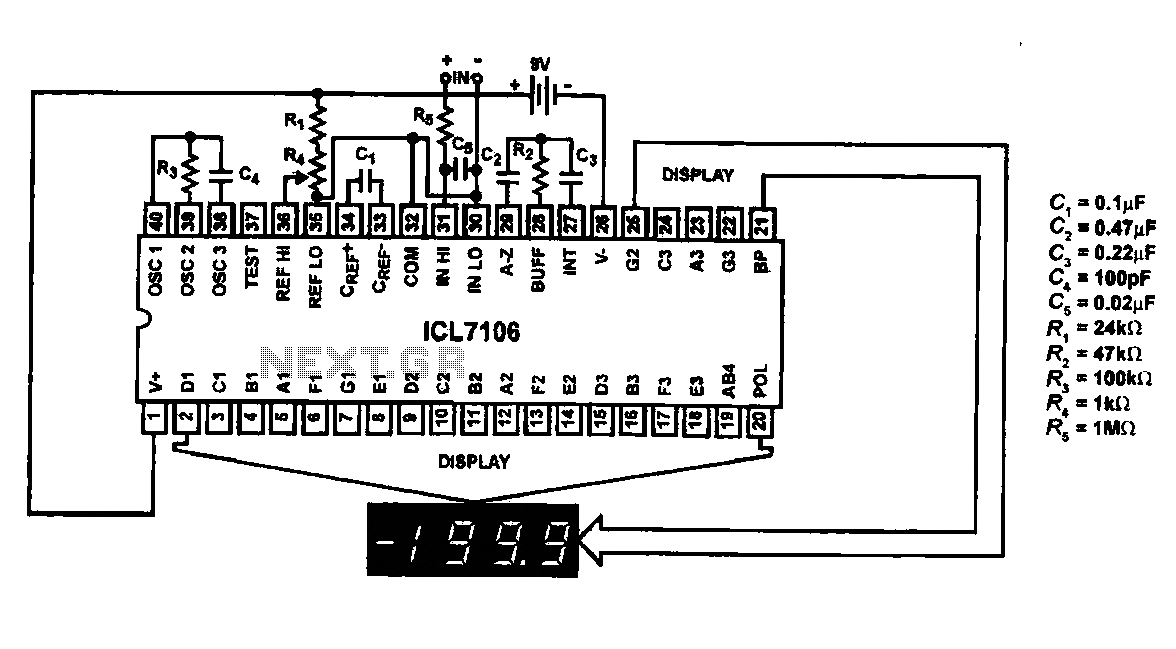
5-Pole Low-Pass Filter Circuit
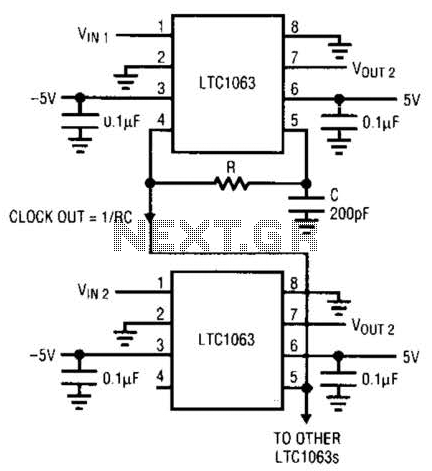
The LTC1063 is a monolithic low-pass filter that provides exceptional DC and AC performance. It features both internal and external clock tunability, with cutoff frequencies reaching up to 50 kHz, a typical output DC offset of 1 mV, and a dynamic range exceeding 12 bits over a decade of input voltage. The LTC1063 is designed to approximate a 5-pole Butterworth low-pass filter. Its unique internal architecture ensures excellent amplitude matching among devices, with typical matching variations of 0.01 dB at 25% of the filter passband and 0.05 dB at 50% of the filter passband. The cutoff frequency of the filter can be programmed using either an internal or external clock. The clock-to-cutoff frequency ratio is 100:1, and in the absence of an external clock, the LTC1063 can utilize its internal precision oscillator. An external resistor and capacitor are used to set the frequency of the internal clock.
The LTC1063 is particularly valuable in applications requiring precise filtering of analog signals while maintaining high fidelity. Its capability to achieve low DC offsets and a wide dynamic range makes it suitable for audio processing, data acquisition systems, and any application where signal integrity is paramount. The implementation of a 5-pole Butterworth filter design ensures a maximally flat frequency response within the passband, which is critical for applications that demand minimal phase distortion.
The device's tunability via an internal or external clock allows for flexibility in various circuit designs. When using the internal clock, the precision oscillator ensures stable performance without the need for additional external components. However, for applications requiring specific cutoff frequencies or synchronization with other system clocks, the external clock option provides versatility. The external resistor and capacitor configuration for setting the internal clock frequency allows for easy adjustments and customization based on the application requirements.
Furthermore, the excellent amplitude matching characteristics across different devices enhance reliability in multi-channel systems where consistent performance is necessary. The LTC1063's ability to maintain tight tolerances in amplitude response is a significant advantage in professional audio equipment, instrumentation, and telecommunications systems, where signal clarity and accuracy are critical. Overall, the LTC1063 represents a robust solution for a wide range of filtering applications, combining advanced technology with practical design features. The LTC1063 is the first monolithic low-pass filter that simultaneously offers outstanding dc and ac performance. It features internal or external clock tunability, cutoff frequencies up to 50 kHz, 1-mV typical output dc offset, and a dynamic range in excess of 12 bits for over a decade of input voltage.
The LTC1063 approximates a 5-pole Butterworth low-pass filter. The unique internal architecture of the filter allows outstanding amplitude matching from device to device. Typical matching ranges from 0.01 dB at 25% of the filter passband to 0.05 dB at 50% of the filter passband.
An internal or external clock programs the filter`s cutoff frequency. The clock-to-cutoff frequency ratio is 100:1. In the absence of an external clock, the LTC1063`s internal precision oscillator can be used. An external resistor and capacitor set the device`s internal clock frequency.
The LTC1063 is particularly valuable in applications requiring precise filtering of analog signals while maintaining high fidelity. Its capability to achieve low DC offsets and a wide dynamic range makes it suitable for audio processing, data acquisition systems, and any application where signal integrity is paramount. The implementation of a 5-pole Butterworth filter design ensures a maximally flat frequency response within the passband, which is critical for applications that demand minimal phase distortion.
The device's tunability via an internal or external clock allows for flexibility in various circuit designs. When using the internal clock, the precision oscillator ensures stable performance without the need for additional external components. However, for applications requiring specific cutoff frequencies or synchronization with other system clocks, the external clock option provides versatility. The external resistor and capacitor configuration for setting the internal clock frequency allows for easy adjustments and customization based on the application requirements.
Furthermore, the excellent amplitude matching characteristics across different devices enhance reliability in multi-channel systems where consistent performance is necessary. The LTC1063's ability to maintain tight tolerances in amplitude response is a significant advantage in professional audio equipment, instrumentation, and telecommunications systems, where signal clarity and accuracy are critical. Overall, the LTC1063 represents a robust solution for a wide range of filtering applications, combining advanced technology with practical design features. The LTC1063 is the first monolithic low-pass filter that simultaneously offers outstanding dc and ac performance. It features internal or external clock tunability, cutoff frequencies up to 50 kHz, 1-mV typical output dc offset, and a dynamic range in excess of 12 bits for over a decade of input voltage.
The LTC1063 approximates a 5-pole Butterworth low-pass filter. The unique internal architecture of the filter allows outstanding amplitude matching from device to device. Typical matching ranges from 0.01 dB at 25% of the filter passband to 0.05 dB at 50% of the filter passband.
An internal or external clock programs the filter`s cutoff frequency. The clock-to-cutoff frequency ratio is 100:1. In the absence of an external clock, the LTC1063`s internal precision oscillator can be used. An external resistor and capacitor set the device`s internal clock frequency.
